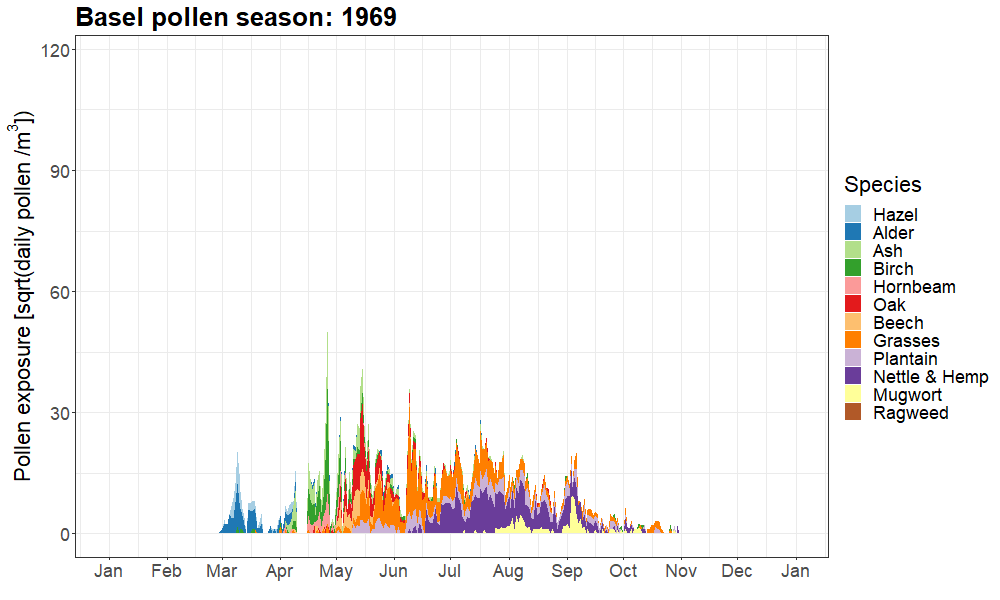Group | Sensoring and Environmental Epidemiology
Technologies allow us to capture ever more data about our environment from many distributed sources and in real-time. The Sensoring and Environmental Epidemiology group is interested in how to capture, analyze and present these data to elucidate new insights into the relationship between environmental exposure and human health. The ongoing shift from sparse, expensive time-averaged or occasional spot measurement data to more abundant, affordable and real-time data presents unique opportunities and challenges in environmental epidemiology.
Our expertise lies in leveraging data science for public health benefit. We work with a diversity of e-health data collection tools like personal measurement devices, wearables, real-time sensors, apps and online data capturing systems. We use these tools to gather high-resolution data on cardiovascular and pulmonary health, sleep, and cognitive function first hand in order to study short-term and triggering impacts of environment on health. In addition, we leverage the statistical power of existing registries and databases such as the Swiss National Cohort, to look at health effects at a national level.
We also work on the measurement and geospatial modelling of a diversity of environmental exposures, such as pollen, air pollution, environmental noise, RF-EMF, aided by ground-level targeted measurements and routine monitoring data as well as satellite-observed GIS data. These high-resolution exposure data can be readily included to explore new hypotheses about associations between our environment and health.
A major current focus area is the determination of the true human health impact of airborne pollen in light of air pollution and especially of climate change influences. In the POCHAS and EPOCHAL projects, we are modelling exposure to pollen, air pollution, and weather retroactively in both space and time, and investigating a diversity of health outcomes.

Marloes Eeftens
MSc, Prof. Dr.
Group Leader
+41612848725
marloes.eeftens@swisstph.ch
Key Projects

The EPOCHAL Study
Almost 20% of the Swiss population suffer from a pollen allergy, a dramatic increase from 100 years ago when it was less than 1%. At the same time, the amount of pollen in the air has increased. There is more to pollen allergies than bothersome sneezing: The EPOCHAL study investigates how different concentrations of pollen from trees, grasses and weeds affect the heart, lungs, brain, sleep and quality of life. We aim to understand these health effects in both pollen-allergic and non-allergic people. Read more.

Pollen, Cardiorespiratory Health and Allergic Symptoms
The PoCHAS project investigated how short-term exposure to airborne pollen affects respiratory and cardiovascular health in Switzerland. Using large, real-world datasets, the study examined links between pollen concentrations, mortality, hospitalisation and allergic symptoms, and how these relationships have evolved with climate change. It also explored combined effects of pollen, air pollution and weather to better understand and reduce the growing health burden of pollen allergies. Read more

The SPUTNIC Study
The SPUTNIC study measured individual exposure to radiofrequency electromagnetic fields (RF-EMF, e.g. from cell phones) in relation to acute health effects including cognitive performance, health-related quality of life, and sleep behaviour. Using sound level meters and fitness trackers, we have also been measuring environmental nighttime noise, physical activity and sleep duration and quality. Read more

Time series plot of Basel pollen seasons from 1969 until 2020
Due to climate change, pollen seasons in Basel and throughout Switzerland have been changing in the last decades. Analyzing data from MeteoSwiss, we found that the pollen season starts earlier, lasts longer, and has increased in intensity for many highly allergenic species. This animation shows the pollen concentrations in Basel over 51 years for 12 of these species, from 1969 until 2020. Read more here. Data source: MeteoSwiss
Our Partners
Latest Publications
All PublicationsBolt H.L et al. Bioactive peptoids against vector-borne parasitic diseases. Bioorg Med Chem Lett. 2026;131:130457. DOI: 10.1016/j.bmcl.2025.130457
Hamelin B et al. Unbiased DNA pathogen detection in tissues: real-world experience with metagenomic sequencing in pathology. Lab Invest. 2026;106(1):104254. DOI: 10.1016/j.labinv.2025.104254
Kidanu A et al. Brucellosis prevention and control in small ruminants using a test and slaughter strategy in the pastoral Afar Region of Ethiopia: A pilot study. Prev Vet Med. 2026;247:106751. DOI: 10.1016/j.prevetmed.2025.106751
Perry R.C et al. Longitudinal associations between SES and EF during adolescence: evidence from the SCAMP study. Learn Individ Differ. 2026;125:102822. DOI: 10.1016/j.lindif.2025.102822
Richter J, Kling K, Hatz C, Neumayr A. Ultrasonographic findings in Schistosoma mekongi infection. A minireview. Parasitol Int. 2026;110:103138. DOI: 10.1016/j.parint.2025.103138
Salmon C et al. Traffic-related air pollution and childhood acute leukemia in France: GEOCAP nationwide case-control study. Environ Res. 2026;288(Pt 2):123303. DOI: 10.1016/j.envres.2025.123303
Viglietti P.G et al. Postnatal pesticide exposure and executive function in children and adolescents: findings from South Africa. Environ Res. 2026;289:123310. DOI: 10.1016/j.envres.2025.123310
Williams H et al. Expert perspectives on exposure-response functions for urban health policy: lessons from a UBDPolicy workshop. Environ Res. 2026;288(Pt 1):123150. DOI: 10.1016/j.envres.2025.123150
 Marloes Eeftens
Marloes Eeftens